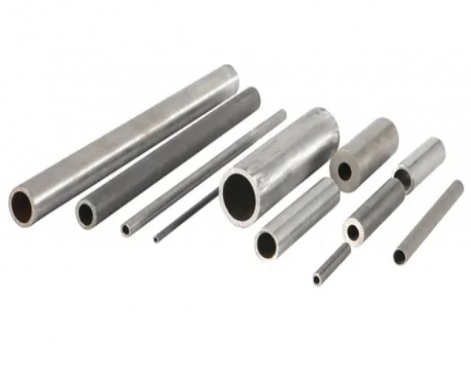The vacuum heat treatment of steel pipes (such as seamless pipes and welded pipes) is a new heat treatment technology that combines vacuum technology and heat treatment technology. The vacuum environment in which vacuum heat treatment is located refers to the atmosphere environment below one atmospheric pressure, including low vacuum, medium vacuum, high vacuum and ultra-high vacuum. Vacuum heat treatment actually belongs to atmosphere controlled heat treatment. Vacuum heat treatment means that all or part of the heat treatment process is carried out in a vacuum state. Vacuum heat treatment can realize almost all heat treatment processes involved in conventional heat treatment, but the quality of heat treatment is greatly improved. Compared with conventional heat treatment, vacuum heat treatment can achieve no oxidation, no decarburization, no carburization, can remove phosphorus chips on the surface of the steel pipe, and has the functions of degreasing and degassing, so as to achieve the effect of surface brightening and purification.
The role of vacuum heat treatment
(1) Protective effect
Anti-oxidation, anti-decarburization, anti-carburization, anti-absorption, anti-corrosion, maintain the original chemical composition and luster of the steel pipe surface, vacuum heat treatment is called bright treatment.
(2) Surface purification
Oxides, nitrides, hydrides and other impurities are reduced, decomposed or volatilized to obtain a smooth steel pipe surface
(3) Vacuum degassing effect
Physical adsorption and desorption are reversible to both temperature and pressure; chemical adsorption and desorption are reversible to pressure but irreversible to temperature.
(4) Degreasing effect
The coolant and lubricant used in the machining process are volatilized or decomposed under vacuum and heating conditions to obtain a smooth surface.

Features of vacuum heat treatment
(1) high quality
Bright treatment of steel pipes without oxidation, decarburization, and carburization, the deformation of steel pipes is 10% of that of ordinary heat treatment, which is significantly reduced
(2) Low cost
The amount of deformation is small, reducing the processing allowance of the next process, reducing the scrap rate and processing costs.
(3) Low energy consumption
Good heat preservation, less heat loss and less power consumption.
(4) Pollution-free (environmental protection)
Disadvantages of vacuum heat treatment
(1) Evaporation is easy to occur;
(2) The equipment is more complicated;
(3) The equipment cost is higher.
The role of vacuum heat treatment
(1) Protective effect
Anti-oxidation, anti-decarburization, anti-carburization, anti-absorption, anti-corrosion, maintain the original chemical composition and luster of the steel pipe surface, vacuum heat treatment is called bright treatment.
(2) Surface purification
Oxides, nitrides, hydrides and other impurities are reduced, decomposed or volatilized to obtain a smooth steel pipe surface
(3) Vacuum degassing effect
Physical adsorption and desorption are reversible to both temperature and pressure; chemical adsorption and desorption are reversible to pressure but irreversible to temperature.
(4) Degreasing effect
The coolant and lubricant used in the machining process are volatilized or decomposed under vacuum and heating conditions to obtain a smooth surface.

Features of vacuum heat treatment
(1) high quality
Bright treatment of steel pipes without oxidation, decarburization, and carburization, the deformation of steel pipes is 10% of that of ordinary heat treatment, which is significantly reduced
(2) Low cost
The amount of deformation is small, reducing the processing allowance of the next process, reducing the scrap rate and processing costs.
(3) Low energy consumption
Good heat preservation, less heat loss and less power consumption.
(4) Pollution-free (environmental protection)
Disadvantages of vacuum heat treatment
(1) Evaporation is easy to occur;
(2) The equipment is more complicated;
(3) The equipment cost is higher.
Previous:How to process spiral steel pipe
Next:Hydraulic steel tube









